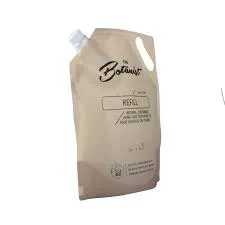- Afrikaans
- Albanian
- Amharic
- Arabic
- Armenian
- Azerbaijani
- Basque
- Belarusian
- Bengali
- Bosnian
- Bulgarian
- Catalan
- Cebuano
- chinese_simplified
- chinese_traditional
- Corsican
- Croatian
- Czech
- Danish
- Dutch
- English
- Esperanto
- Estonian
- Finnish
- French
- Frisian
- Galician
- Georgian
- German
- Greek
- Gujarati
- haitian_creole
- hausa
- hawaiian
- Hebrew
- Hindi
- Miao
- Hungarian
- Icelandic
- igbo
- Indonesian
- irish
- Italian
- Japanese
- Javanese
- Kannada
- kazakh
- Khmer
- Rwandese
- Korean
- Kurdish
- Kyrgyz
- Lao
- Latin
- Latvian
- Lithuanian
- Luxembourgish
- Macedonian
- Malgashi
- Malay
- Malayalam
- Maltese
- Maori
- Marathi
- Mongolian
- Myanmar
- Nepali
- Norwegian
- Norwegian
- Occitan
- Pashto
- Persian
- Polish
- Portuguese
- Punjabi
- Romanian
- Russian
- Samoan
- scottish-gaelic
- Serbian
- Sesotho
- Shona
- Sindhi
- Sinhala
- Slovak
- Slovenian
- Somali
- Spanish
- Sundanese
- Swahili
- Swedish
- Tagalog
- Tajik
- Tamil
- Tatar
- Telugu
- Thai
- Turkish
- Turkmen
- Ukrainian
- Urdu
- Uighur
- Uzbek
- Vietnamese
- Welsh
- Bantu
- Yiddish
- Yoruba
- Zulu
how thick is 060 inches
Understanding the Thickness of 0.060 Inches
When it comes to measurements, particularly in industries like manufacturing, textiles, and construction, precision and clarity are essential. One common question that arises in various contexts is about the thickness of materials, specifically How thick is 0.060 inches? In this article, we will explore this measurement in detail, providing context, examples, and conversions to help you understand this thickness better.
The Equivalent in Millimeters
First, it’s crucial to understand how 0.060 inches translates into other measurement systems. In the metric system, inches are often converted to millimeters. To convert inches to millimeters, we can use the conversion factor 1 inch is equal to 25.4 millimeters. Therefore, to convert 0.060 inches to millimeters, we multiply
\[ 0.060 \text{ inches} \times 25.4 \text{ mm/inch} = 1.524 \text{ mm} \]
So, 0.060 inches is equivalent to 1.524 millimeters. This information is useful for those who primarily work with metric measurements or in regions where the metric system is standard.
Practical Examples of 0.060 Inch Thickness
Understanding what 0.060 inches or 1.524 millimeters translates to in practical terms can help in identifying its applications across various fields
1. Metal Sheets In the metalworking industry, sheets of metal are often measured in inches. A metal sheet with a thickness of 0.060 inches is typically categorized as a relatively thin sheet. Such thickness is common for applications in manufacturing components for automotive parts, appliances, and structural applications where weight reduction is essential without compromising strength.
how thick is 060 inches

2. Plastic Sheets Similarly, plastic sheets are available in various thicknesses. A thickness of 0.060 inches is often seen in materials used for signage, protective coverings, or even in crafting where durability is needed without excessive weight.
3. Cardstock and Paper In the world of paper products, a thickness of 0.060 inches can refer to heavier cardstock used for business cards or high-quality invitations. This thickness provides a sturdy, professional feel that is appealing in stationery products.
Comparison with Other Thicknesses
To give a better perspective on how thick 0.060 inches is, let’s compare it to other common thicknesses
- Standard Printer Paper A typical sheet of printer paper measures about 0.005 inches thick (or 0.12 mm). Thus, a sheet that is 0.060 inches is significantly thicker—approximately 12 times the thickness of regular paper.
- Business Cards Standard business cards usually have a thickness of about 0.010 inches (0.25 mm) to 0.012 inches (0.30 mm). A card that is 0.060 inches thick would be quite robust, offering a luxurious feel, making it stand out in a stack.
- Guitar Picks Guitar picks come in a variety of thicknesses, from thin (around 0.38 mm or 0.015 inches) to thick (up to 1 mm or more). A pick at 0.060 inches would be considered on the thicker end, suitable for players looking for more durability and grip.
Conclusion
In conclusion, the thickness of 0.060 inches is a versatile measurement that has significant applications across various industries. Whether you’re working with metal, plastic, or paper products, understanding this measurement can aid in making informed decisions regarding material selection. Additionally, by converting to millimeters, we see that it holds a critical place in both imperial and metric systems. When discussing thickness in practical terms, knowing the comparisons to everyday materials helps visualize the actual size, reinforcing the importance of precision in our conversations related to measurement. Ultimately, the ability to translate and understand different measurements ensures effective communication and decision-making in professional and everyday contexts.













